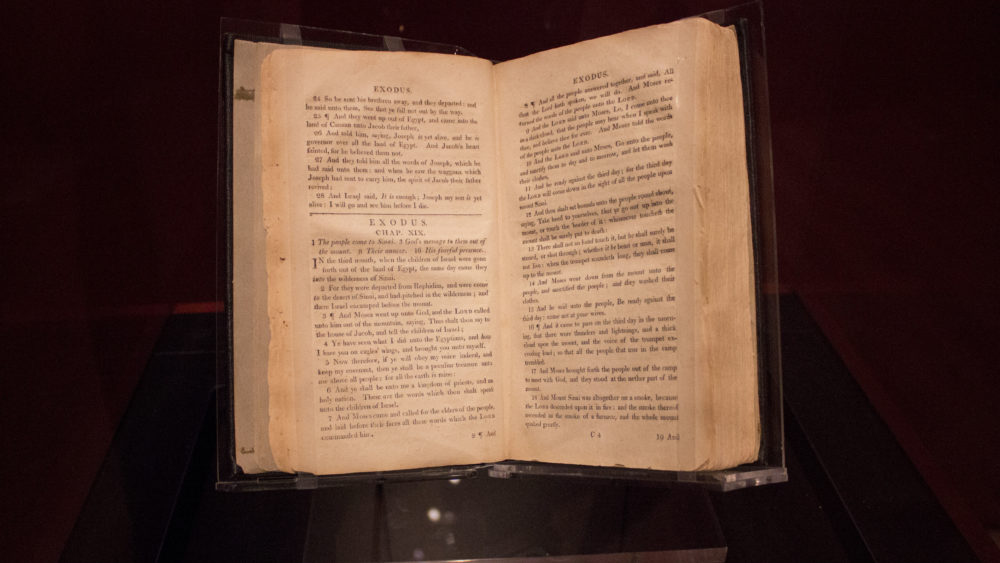It’s official: the exodus has been removed from the Bible. Oh, and the Book of Revelation too. In fact, any parts that emphasise liberation and freedom have been taken out.
You may be wondering if this is an April Fools’ prank. But in fact, this is the reality of the “Slave Bible” – a version of the Holy Book first published for the Society for the Conversion of Negro Slaves in 1807 in London.
There are now only a few of these controversial Bibles remaining, but one copy is currently on display at the Museum of the Bible in Washington in the United States as part of an exhibition “The Slave Bible: Let the Story Be Told”.
The exhibition draws on new research into the origins of the Slave Bible and its use by missionaries in the 1800s among enslaved Africans in the Caribbean. According to a media release by Museum of the Bible, it “provides insight into a dark moment in history in which the Bible and religion were used for imperial and economic gain.”
“Its publishers deliberately removed portions of the biblical text, such as the exodus story, that could inspire hope for liberation.” – Museum of the Bible
The Museum’s website further explains how missionaries used the Bible in a distorted attempt to “improve the lives” of slaves, while at the same time fortifying “the system of slavery that was so vital to the British Empire.”
“They used the Slave Bible to teach enslaved Africans how to read while at the same time introducing them to the Christian faith. Unlike other missionary Bibles, however, the Slave Bible contained only ‘select parts’ of the biblical text. Its publishers deliberately removed portions of the biblical text, such as the exodus story, that could inspire hope for liberation.”
In drawing attention away from passages emphasising freedom and focussing on “themes of obedience and submission”, the Slave Bible was so stripped back that it contained parts of only 14 biblical books – compared to 66 books in a typical Protestant Bible and 73 in the Roman Catholic version.
“A volume like this would have been used for manipulative and oppressive purposes.” – Seth Pollinger
“A volume like this would have been used for manipulative and oppressive purposes … there was a purpose attached to it: teaching those who were enslaved how to be obedient to their masters and what their duties to their masters were,” Seth Pollinger, curatorial director of the Museum of the Bible told The Times of Israel.
But despite these attempts at repression, the biblical messages of hope and freedom made their way into these African communities through educated slaves, as well as other missionaries who supported the abolitionist movement – such as those from Baptist and Methodist traditions.
“Enslaved communities were drawn to the story of the exodus in the remembered stories they passed down and in the words and music of their spirituals,” says the Museum of the Bible website.
Noting the important role that the book of Exodus still plays in African American culture today, a commentator in the media release for the exhibition – Matthew Watley, minister of Reid Temple in Washington – concludes: “While the abridged Bible was used as a book of oppression, the Bible today, indeed, is a book of freedom and hope for all communities, across the globe.”
If you happen to be travelling to the US in the next few months, “The Slave Bible: Let the Story Be Told” exhibition is on until August 31, 2019.
Email This Story
Why not send this to a friend?




